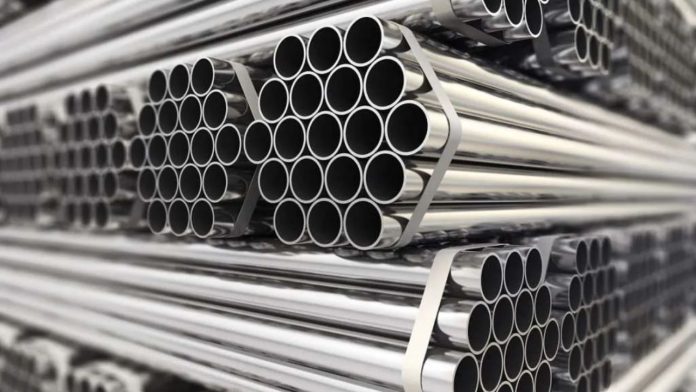One of the most frequently employed metals in the contemporary industry is called mild steel or MS material. Its cheapness, the balanced nature, and versatility have contributed to its use in almost all things, ranging from small aspects such as mechanical parts to giant constructions. MS Material (Mild Steel Material) Composition, properties, and its applications will give insight into why mild steel is still the preferred metal when it comes to various kinds of engineering and manufacturing requirements.
Defining Mild Steel
Mild steel is a low-carbon steel typically 0.16% to 0.29% carbon with other contents of manganese, phosphorus, and sulfur being at varying levels. This is a relatively low carbon content that makes it different compared to medium and high carbon steels and gives it its own mechanical properties. The iron-carbon ratio enables the mild steel to possess favorable strength, and at the same time, good ductility and formability. Mild steel is also known as soft steel due to its soft characteristic as compared to the high-carbon steels, and it is particularly appreciated due to its ease of molding, mechanical machining, and welding.
Composition and Structure
Mild steel is comprised essentially of iron with a small proportion of carbon. Other additives like manganese help to harden and smooth wear off, and traces of phosphorus and sulfur help to improve machinability. The microstructure is a mixture of ferrite and pearlite (low amount) in the annealed (soft) condition. This structure renders mild steel low in hardness, high in toughness, and able to resist deformation without cracking, and these make the stiffness highly flexible in the manufacturing process.
Physical and Mechanical Properties
Mild steel has the characteristic that it has a low strength and hardness when compared to alloy steels, though ductility and impact resistance are high. It has a melting point between 1450 and 1520 °C, which allows it to withstand high-temperature processing and remain intact. Within the tension, mild steel presents a close stress-strain curve with an elastic phase, a yielding part, a strengthening phase, and a local deformation part where necking happens. Its low carbon content guarantees high weldability and can be joined by a fairly wide range of welding methods without the more complicated preheat and post-weld processes.
Grades and Standards
The production of mild steel has loads of grades whose characteristics provide a certain balance of properties. Typical examples are AISI 1008, which has an outstanding capability of cold forming, and AISI 1020, which has a balanced strength and ductility. Every grade meets global requirements, and this serves to certify consistency and quality in global applications. Depending on the application, the processing conditions, and the loads, the selected grade usually becomes a crucial step in engineering design.
Processing and Fabrication
Mild steel is soft and malleable and can be stamped, forged, rolled, and machined. Cold forming is highly productive, and shapes can be produced with little loss of strength, even of complex shape. Carburizing treatments may be used on applications where better hardness of the surface is desired. This further increases the usefulness of the steel since it can be welded to create more designs than what would otherwise be created cost-effectively.
Applications Across Industries
Flexibility of mild steel has seen it being a critical component in the process of construction, automobile manufacturing, machinery fabrication, and within the domestic household. It is commonly applied in the construction industry as structural, reinforcement bars, and piping. Mild steel is versatile in that it finds application in body panels associated with automotive manufacturers and also chassis components because it is crush-resistant and has good formability. It is also employed in the manufacturing of pressure vessels and storage tanks, as well as parts of machines, which demonstrates the involvement of the product in heavy industry, as well as chainsaws.
Selecting the Right Mild Steel for the Job
The selection of the kind of mild steel will depend on the environment where it will be used, the load that one requires it to carry, as well as the processing techniques present. As an example, to create a structure that will perform under static loads, AISI 1020 is the required AISI; whereas, structures that are subject to dynamic loads use AISI 1015. The nature of the environment, like exposure to water or chemicals, might require the use of protective covering like galvanizing to enhance the service life.
Conclusion
Despite its humble carbon makeup and immense usefulness in construction and production, mild steel has demonstrated the worthiness of the product as a solid and creative product. It is well balanced in terms of strength, ductility, and weldability, which makes it capable of addressing the various needs of contemporary industries. Whether creating the carcass of a skyscraper, the chassis of a car, or the skeleton of household devices, the story of the evolution of mild steel to being the skeleton in construction continues to write itself as one of efficiency in engineering and longevity in performance.







